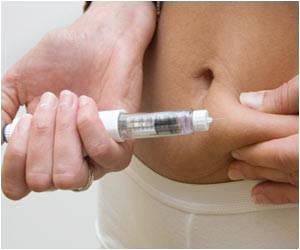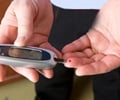The key differences between Type 1 and Type 2 diabetes in the Asian American population have been identified by Researchers at Joslin Diabetes Center.

Diabetes in Asian and Asian American populations is rising. China currently has the largest population of diabetics in the world, at 92 million, followed by India (50 million), compared to the United States’ 27 million. This study has identified reliable diagnostic tools for identifying type 2 diabetes, making correct diagnoses quicker. It has also identified critical physical differences in Asian patients with diabetes that should be considered in making recommendations for proper treatment.
"Diabetes in Asian Americans is somewhat of a mystery," said Dr. William Hsu, first author on the study. Dr. Hsu and his colleagues have been working on the problem of diagnosing Asian and Asian American diabetes for more than a decade as part of the Asian American Diabetes Initiative at Joslin Diabetes Center in Boston.
Caucasians with Type 2 diabetes are typically overweight, older, and have a strong family history of the disease. Caucasians with Type 1 diabetes usually present with the opposite characteristics. But, in many cases, Asian Americans with Type 2 diabetes are young and have a normal body weight, causing difficulties in differentiating the two types.
There are also some differences in the presentation of Type 1 diabetes in Asian Americans – Caucasians show strong evidence of autoimmunity against beta cells, whereas Asian Americans only display less than 50 percent of time.
This has led to a number of misdiagnoses within the Asian American community. Dr. Hsu and his colleagues sought to pinpoint unequivocal differences in the diseases that could allow for more accurate diagnoses.
Advertisement
Using an insulin clamp, the most reliable method for measuring insulin resistance, the scientists saw that the subjects with type 2 diabetes had higher insulin resistance than those with type 1 or no diabetes at all. They also noted a correlation between insulin resistance and the levels of a protein, known as fatty acid-binding protein, suggesting that the two were connected. More study is needed to reveal whether or not targeting this protein could help treat insulin resistance.
Advertisement
The researchers also found that Asian Americans with type 2 diabetes had a higher level of fat tucked away inside their torso, where it was not as visible. "Bad fats are hidden away," Dr. Hsu said. This indicates that while they might not be overweight, they are not in great physical shape.
So, "the message needs to be modified," he said. "Not that they necessarily need to lose weight; it should be ’let’s get fit, let’s exercise.’ "
The Joslin researchers also confirmed that when glucose levels are under control in Asian Americans with type 1 diabetes, they are not necessarily insulin resistant, providing further distinction between the two types of diabetes.
Source-Eurekalert















